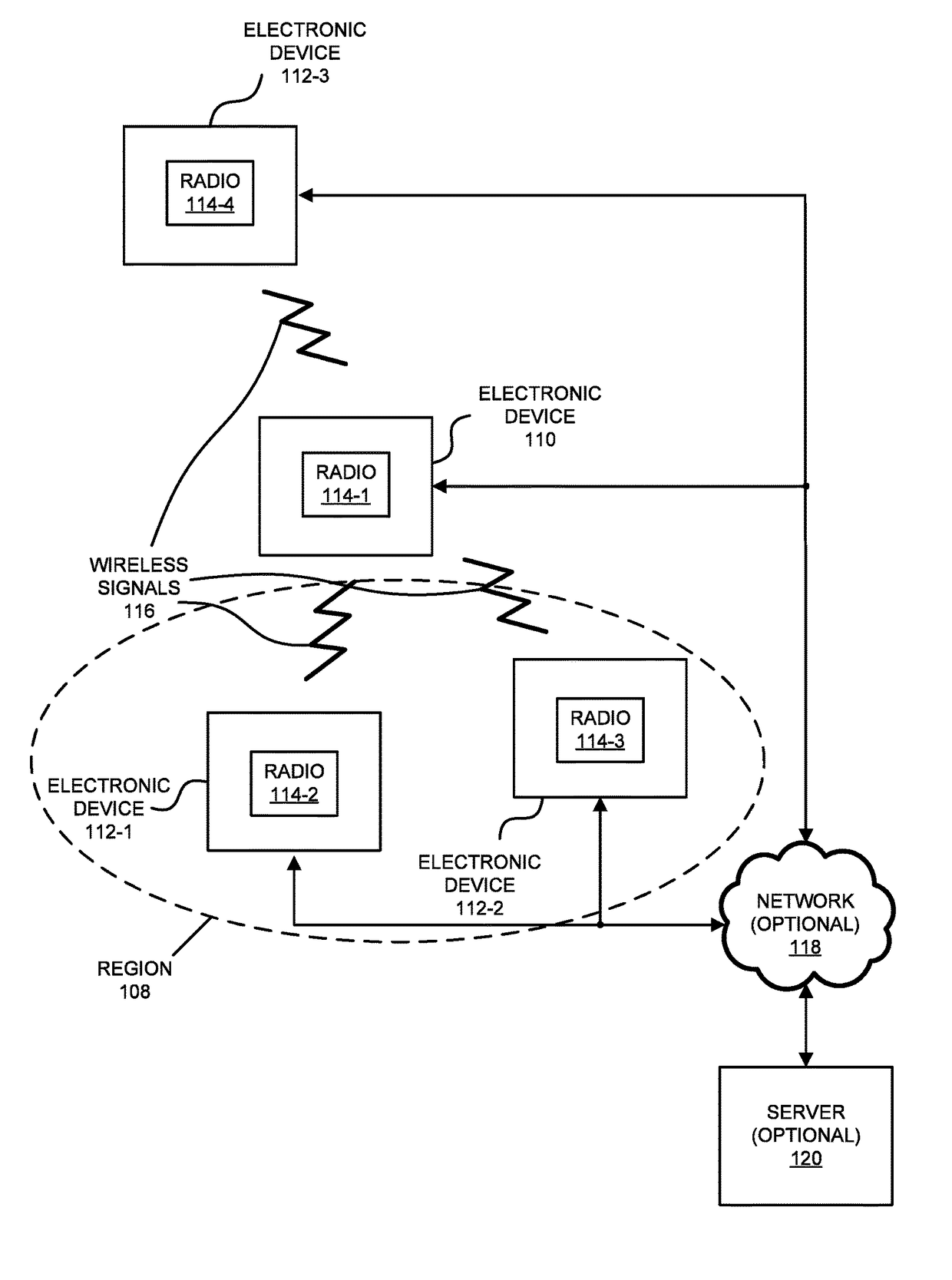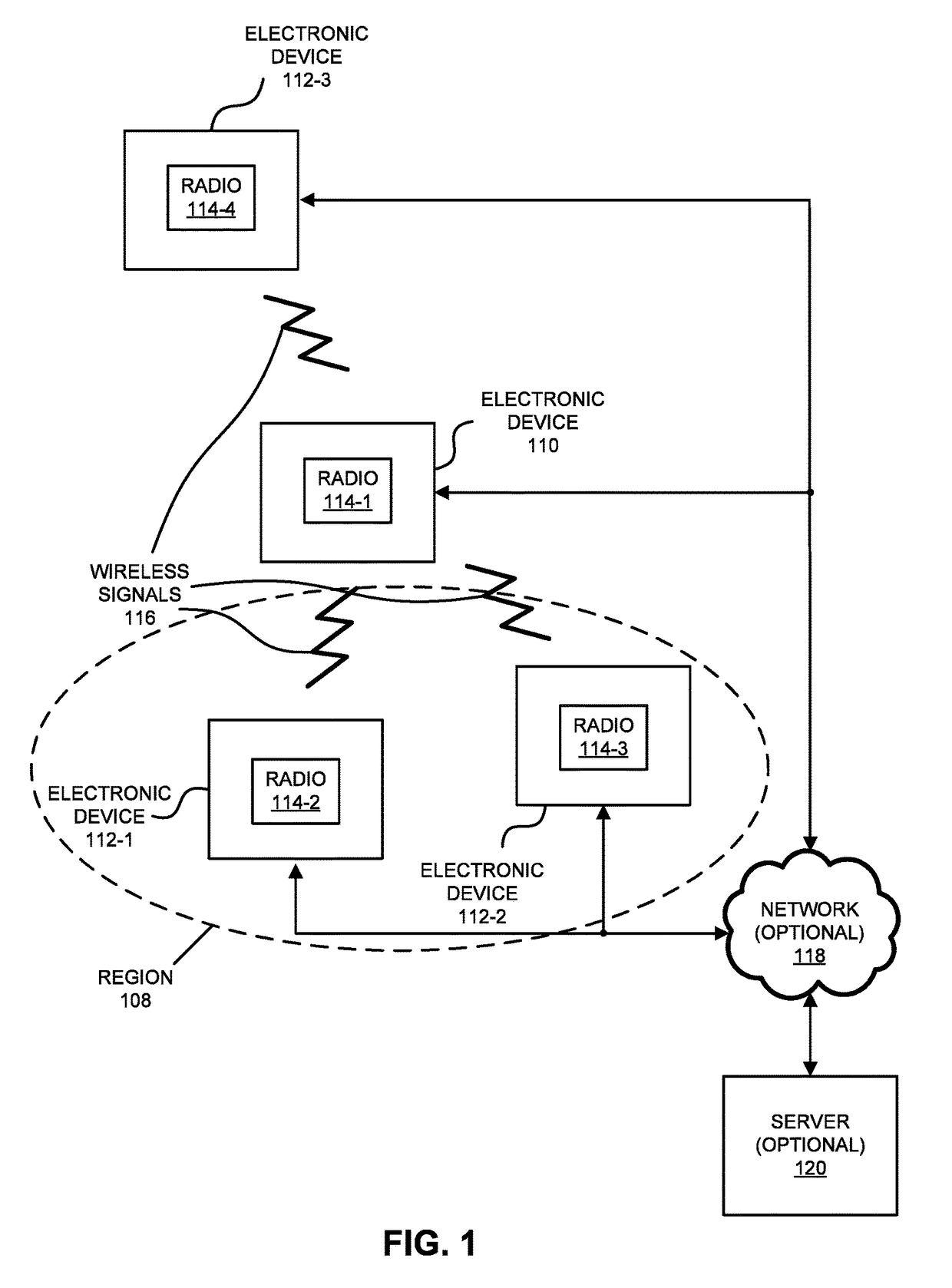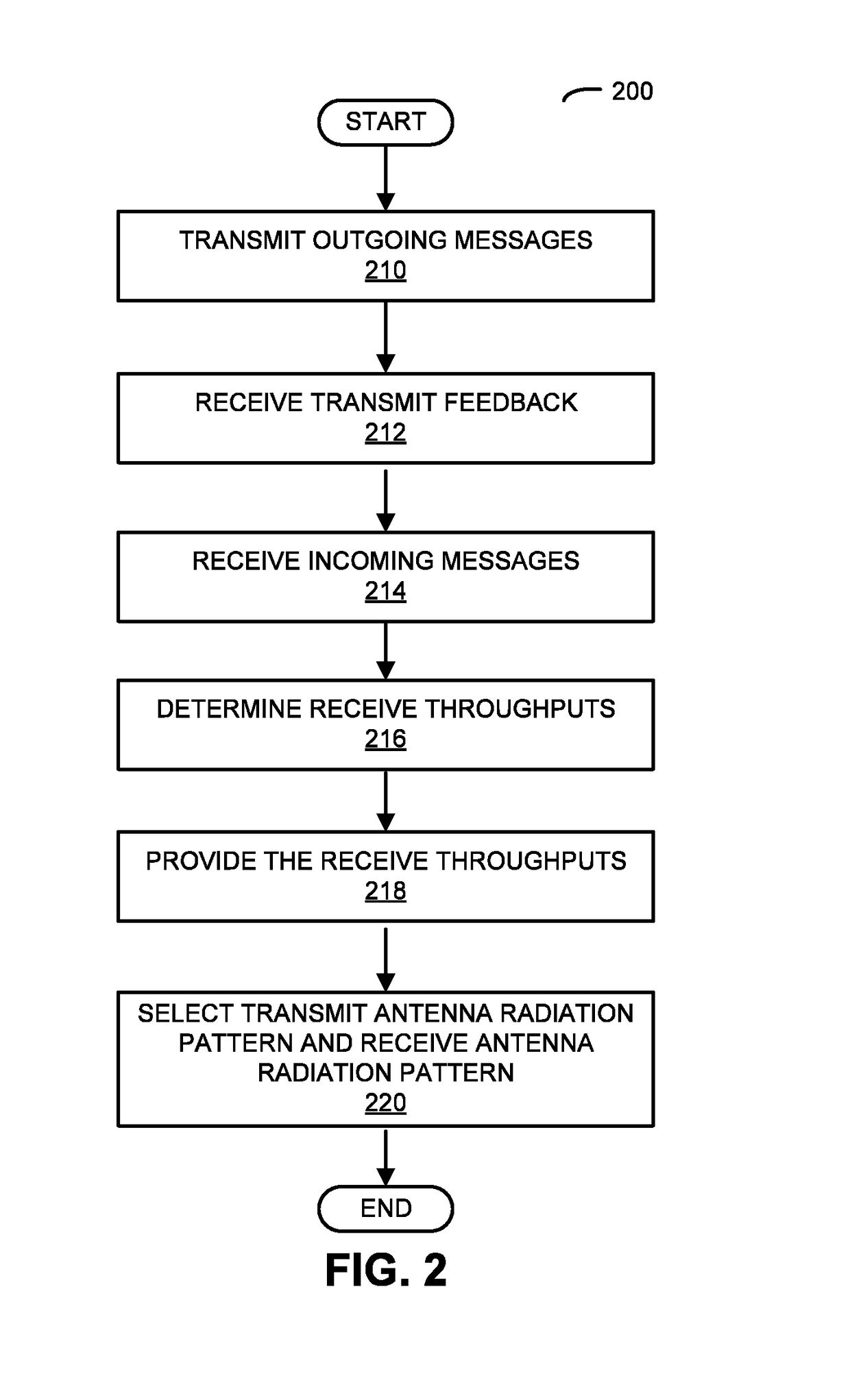Schedule Aggregation and Antenna-Radiation-Pattern Optimization
a technology of antenna radiation pattern and schedule aggregation, applied in the field of schedule aggregation and antenna radiation pattern optimization, can solve problems such as difficulty in determining optimal antenna radiation pattern, and achieve the effect of reducing interferen
- Summary
- Abstract
- Description
- Claims
- Application Information
AI Technical Summary
Benefits of technology
Problems solved by technology
Method used
Image
Examples
Embodiment Construction
[0039]In one group of embodiments, an electronic device iteratively determines an optimal transmit antenna radiation pattern and an optimal receive antenna radiation pattern based on a feedback process with a second electronic device. First, the electronic device transmits outgoing messages to the second electronic device using a set of transmit antenna radiation patterns having different transmit spatial orientations. Based on throughput feedback from the second electronic device, the electronic device selects the optimal transmit antenna radiation pattern. Then, based on throughputs for incoming messages from the second electronic device that were received using a set of receive antenna radiation patterns having different receive spatial orientations, the electronic device selects the optimal receive antenna radiation pattern. Note that the transmit antenna radiation pattern and the receive antenna radiation pattern may reduce or eliminate interference between the electronic devic...
PUM
 Login to View More
Login to View More Abstract
Description
Claims
Application Information
 Login to View More
Login to View More - R&D
- Intellectual Property
- Life Sciences
- Materials
- Tech Scout
- Unparalleled Data Quality
- Higher Quality Content
- 60% Fewer Hallucinations
Browse by: Latest US Patents, China's latest patents, Technical Efficacy Thesaurus, Application Domain, Technology Topic, Popular Technical Reports.
© 2025 PatSnap. All rights reserved.Legal|Privacy policy|Modern Slavery Act Transparency Statement|Sitemap|About US| Contact US: help@patsnap.com



